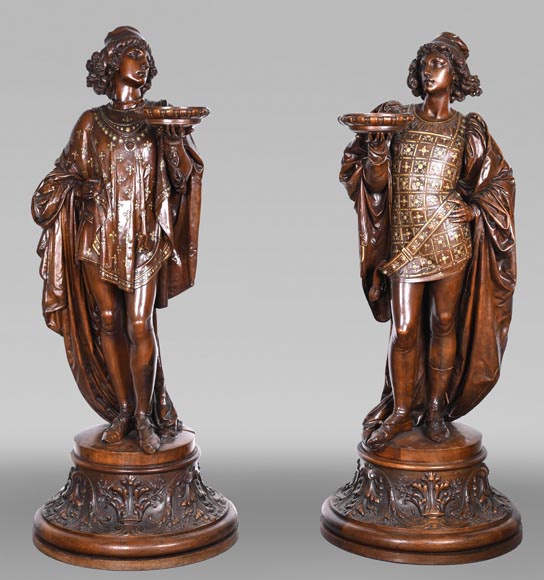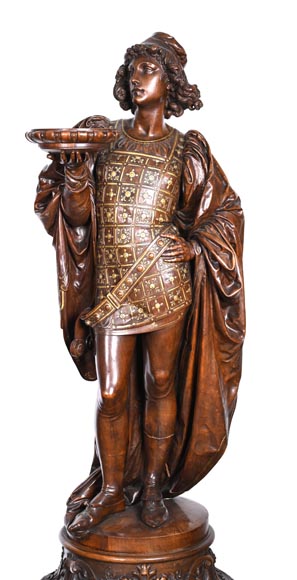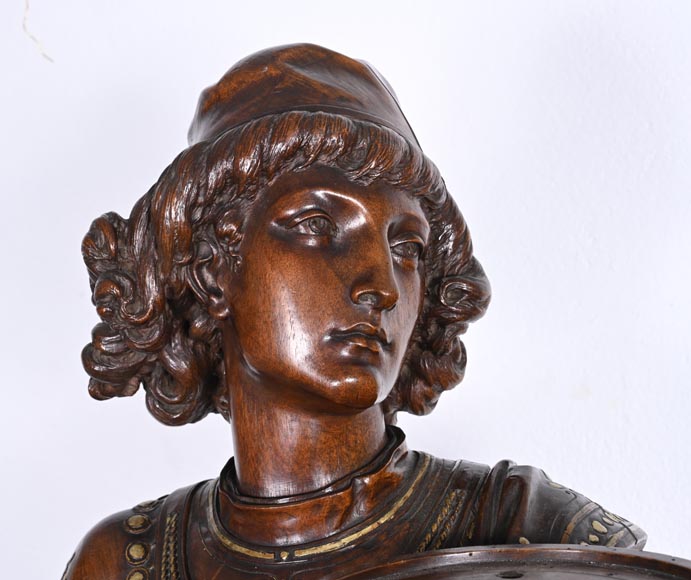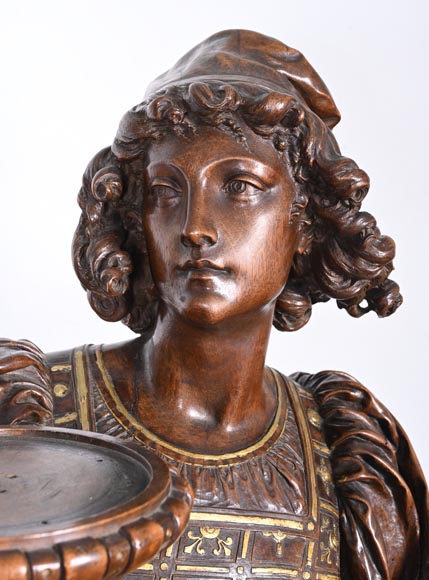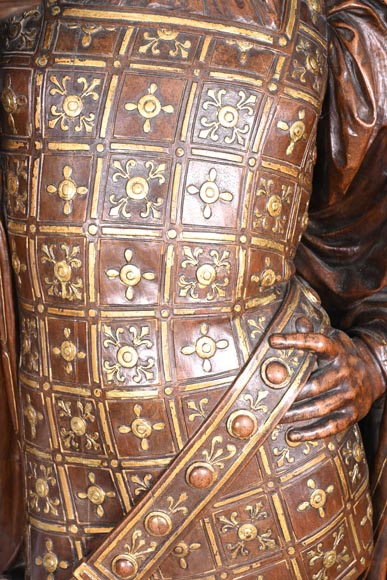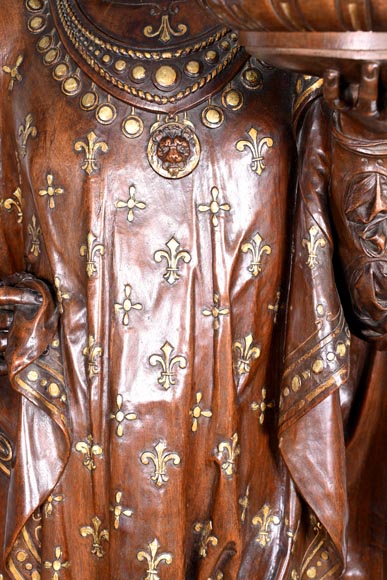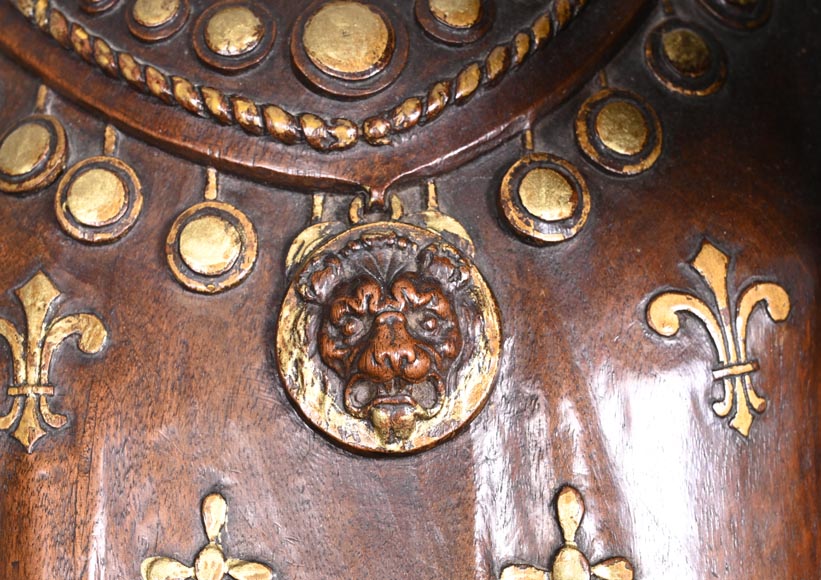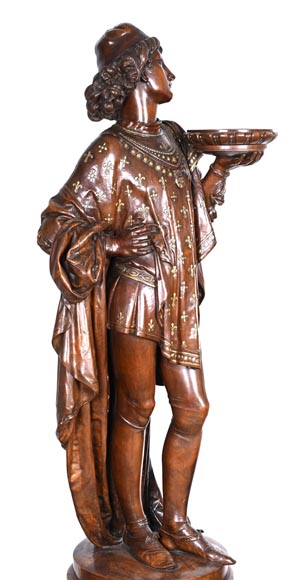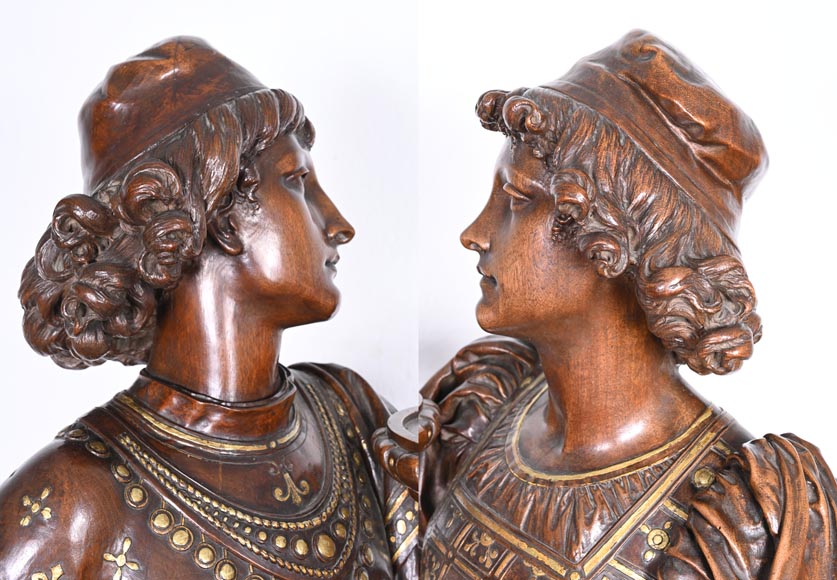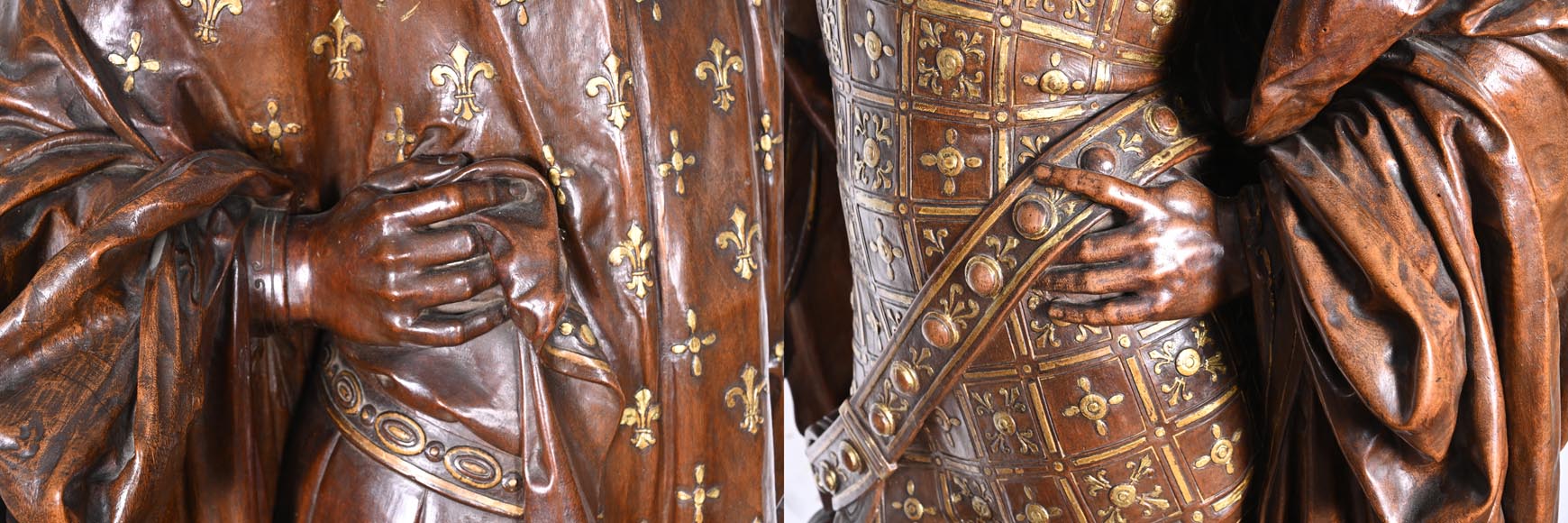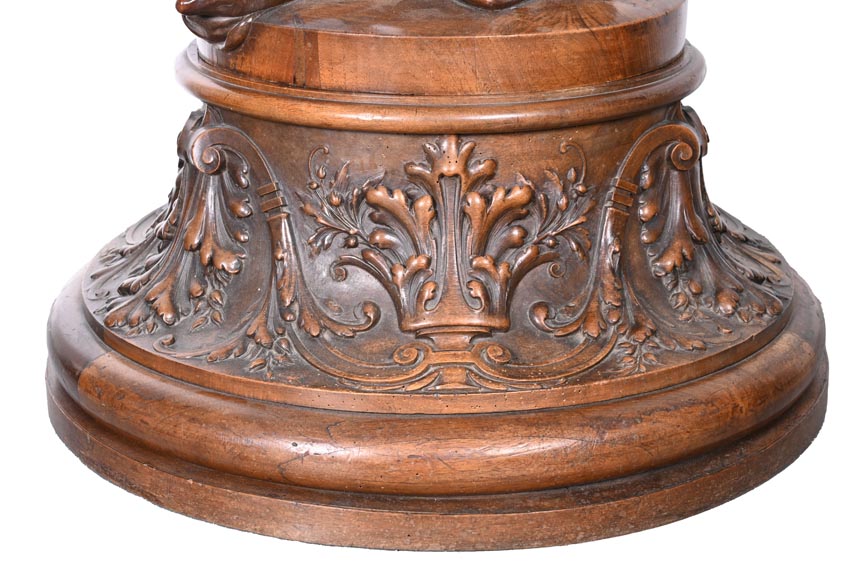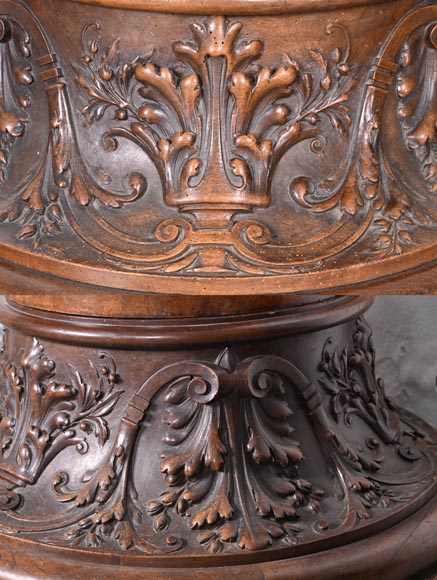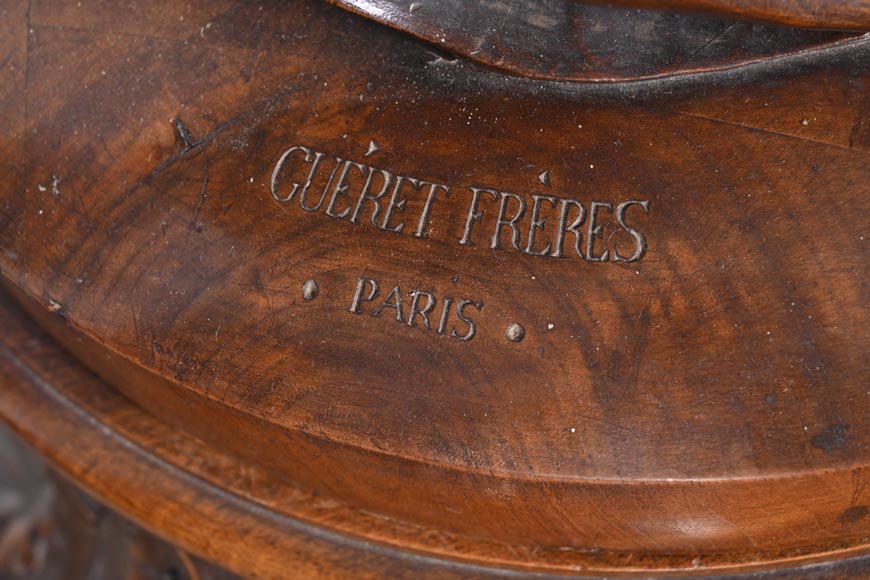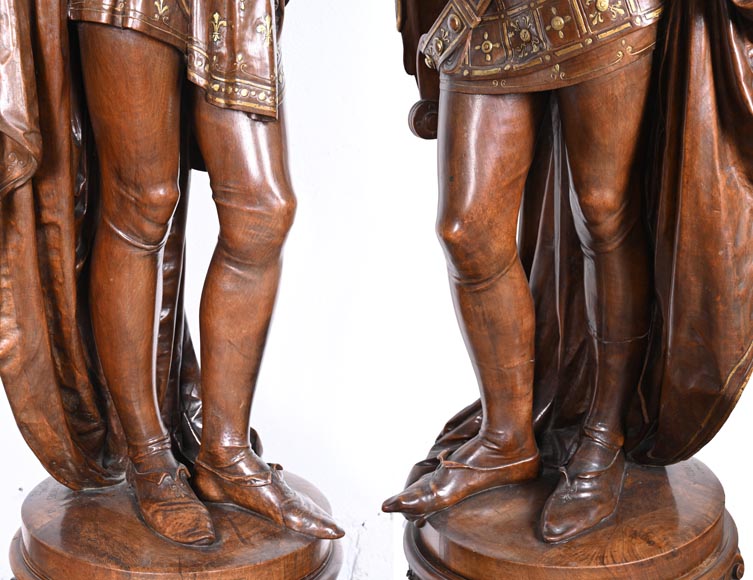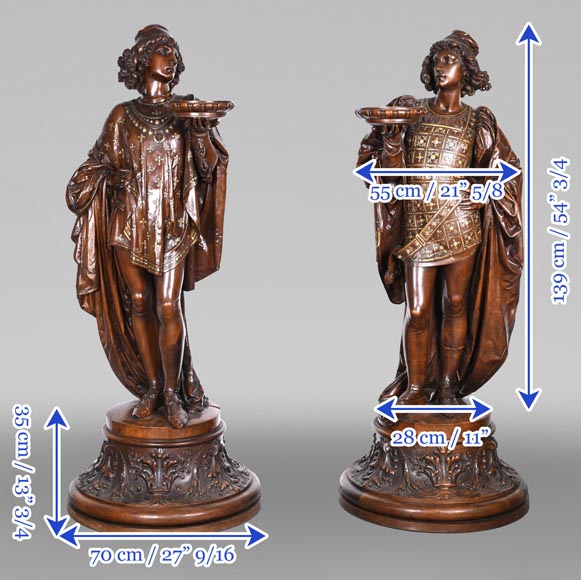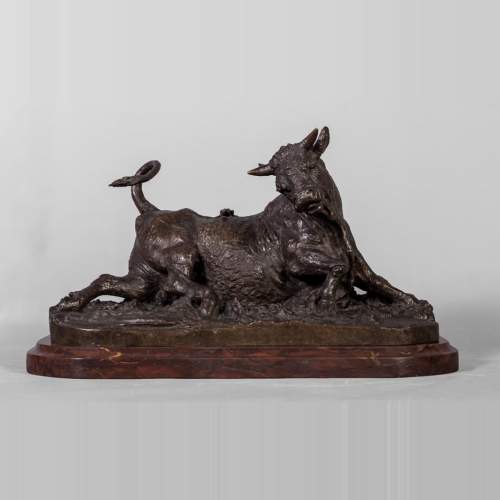Style Neo-Renaissance / Ref.15775
GUÉRET FRÈRES (cabinetmakers) and CARRIER-BELLEUSE (model by), Pair of "Pages" torch holders, model from the 1867 Universal Exhibition
Dimensions
Width 21'' ⅝ 55cm
Height 68'' ½ 174cm
Depth: 11'' 28cm
Origin:
France, 19th century
These two walnut torch holders signed Guéret Frères were displayed at the cabinetmakers' stand at the 1867 Universal Exhibition.
In Les curiosités de l'Exposition universelle de 1867, Hippolyte Gautier commented on these two Renaissance pages: ‘of a good attitude; made of walnut wood, but alive and palpitating under their fleur-de-lis dalmatic’. In fact, one of the pages is wearing a coat that rests elegantly on his forearms, allowing us to admire a suit covered in gilded fleurs-de-lis, indicating that he is surely in the service of the royal family. The second page, of which the Schaezlerpalais in Germany owns a copy, wears equally luxurious clothes, but his coat gives him more structure thanks to its puffed shoulders. This diversity of costume contributes to the movement and vitality of the ensemble that Gautier describes.
Albert-Ernest Carrier de Belleuse, known as Carrier-Belleuse (1824-1887), was the most prolific sculptor of the Second Empire. He received many commissions and took part in the decoration of important institutions. Note, for example, the two torches on the main staircase of the Opéra Garnier. Carrier-Belleuse was a great admirer of the Renaissance and the 18th century. A regular at the Salons and Universal Exhibitions, he received numerous medals and awards. Other works by Guéret Frères are known to him, such as this walnut clock from 1863 in the Metropolitan Museum.
Denis-Désiré (born 1828) and Onésime Guéret (born 1830), who founded a carved furniture factory in 1852 at 7 rue Buffault in Paris under the name ‘Guéret Frères’, were also well-known participants in the Universal Exhibitions from 1855 onwards. In 1867, they won a gold medal for a "very beautiful dining room sideboard, topped with a stag's head and adorned with a beautiful relief-carved panel. All in oak" (L'Exposition universelle de 1867 illustrée). They also received rave reviews for several pieces on their stand that referred to this gold medal (The Illustrated Catalogue of the Universal Exhibition 1867, The Art Journal), and Denis-Désiré even became a Chevalier de la Légion d'Honneur.
The excellence of their sculpted furniture, for which they received many awards, boosted their order book. Not only the wealthy bourgeoisie, but also illustrious personalities such as the Duc d'Aumale, Napoleon III and even Mr. Bryce, who were very keen on this sumptuous furniture, placed orders with them. Bryce commissioned them to make all the furniture for his mansion on Avenue Gabriel.
Informations
Price: on request
Recommended for you :
Dimensions:
Width: 47
Height: 23
Depth: 26
Dimensions:
Width: 28
Height: 122
Depth: 26
Dimensions:
Width: 15
Height: 14
Depth: 7
Dimensions:
Width: 44
Height: 110
Depth: 33
Diameter: 33
Dimensions:
Width: 58
Height: 232
Depth: 72
Dimensions:
Width: 77
Height: 58
Depth: 36
Dimensions:
Width: 35
Height: 111
Depth: 43
Dimensions:
Width: 25
Height: 43
Depth: 23
Dimensions:
Width: 8
Height: 23
Depth: 14
Dimensions:
Width: 34
Height: 67
Depth: 34
Dimensions:
Width: 26
Height: 63
Depth: 26
Dimensions:
Width: 44
Height: 68
Depth: 22



